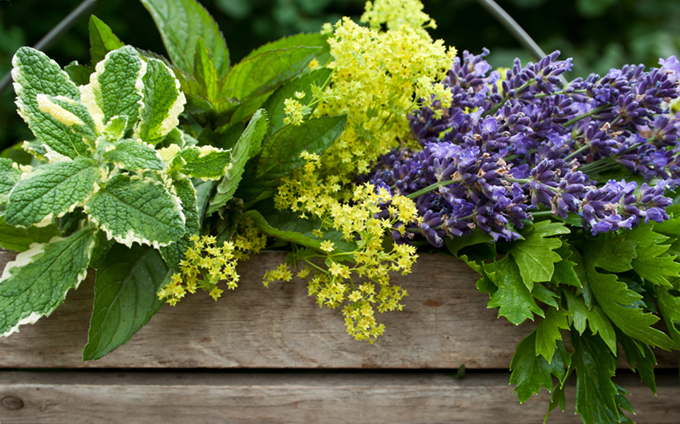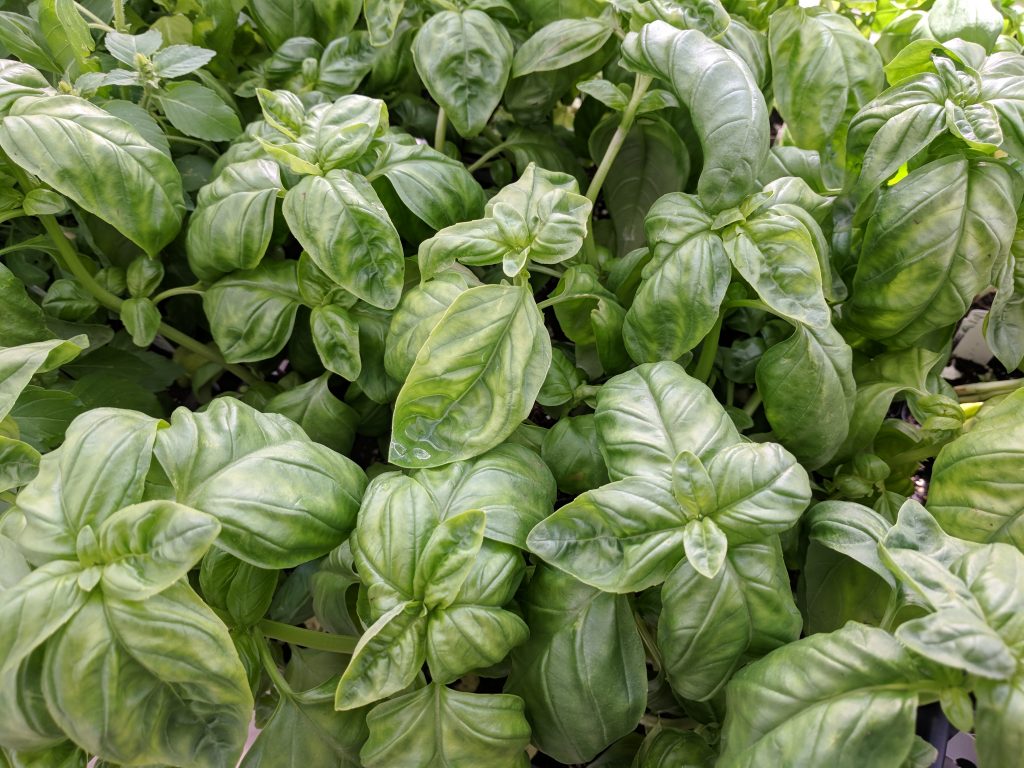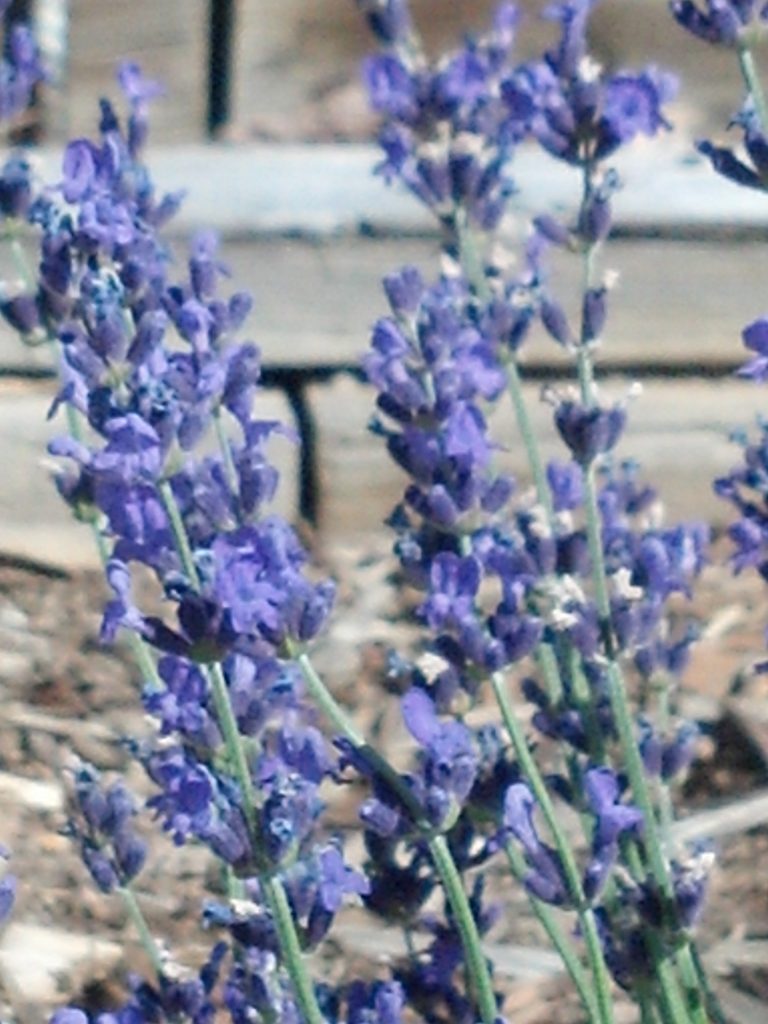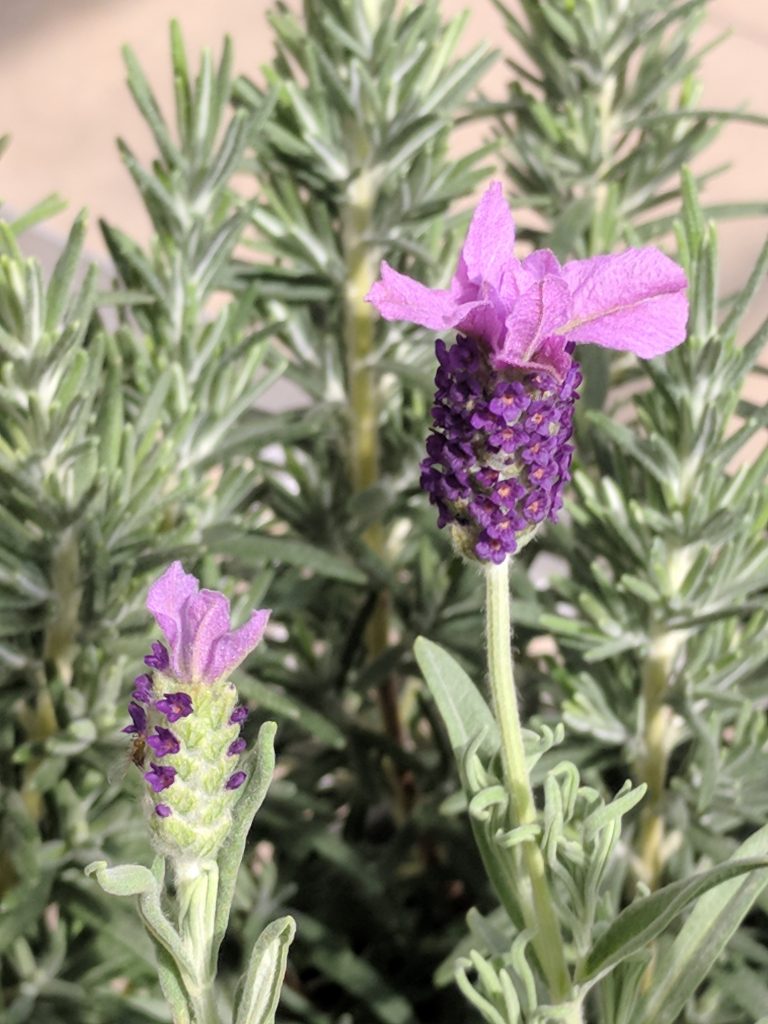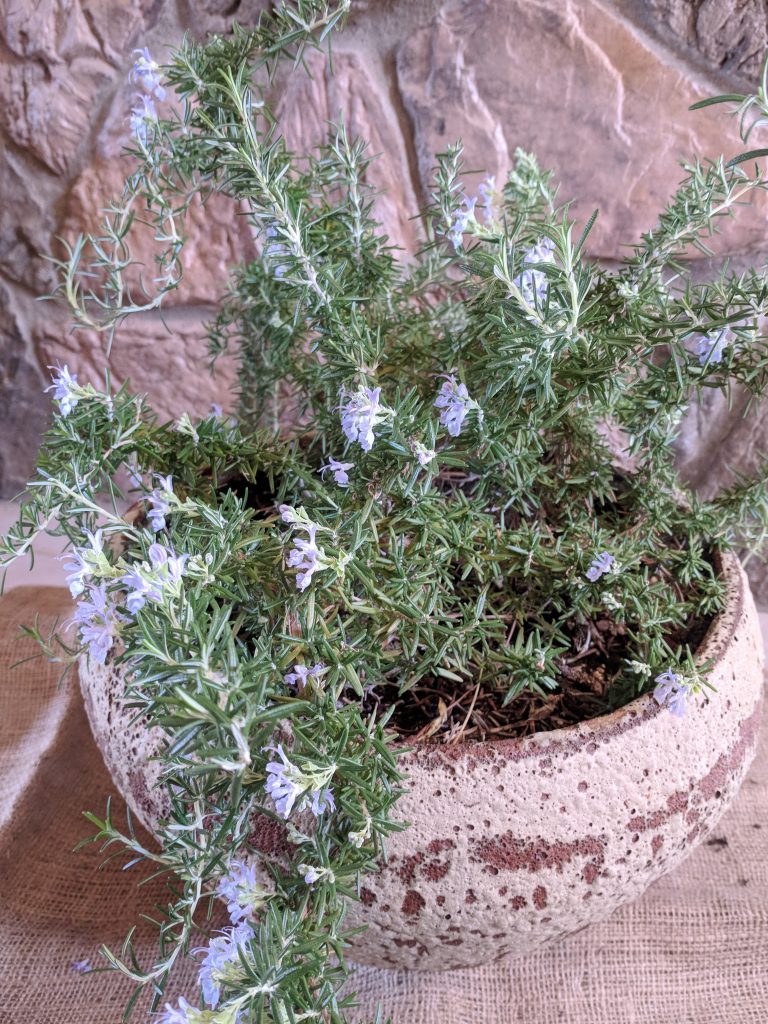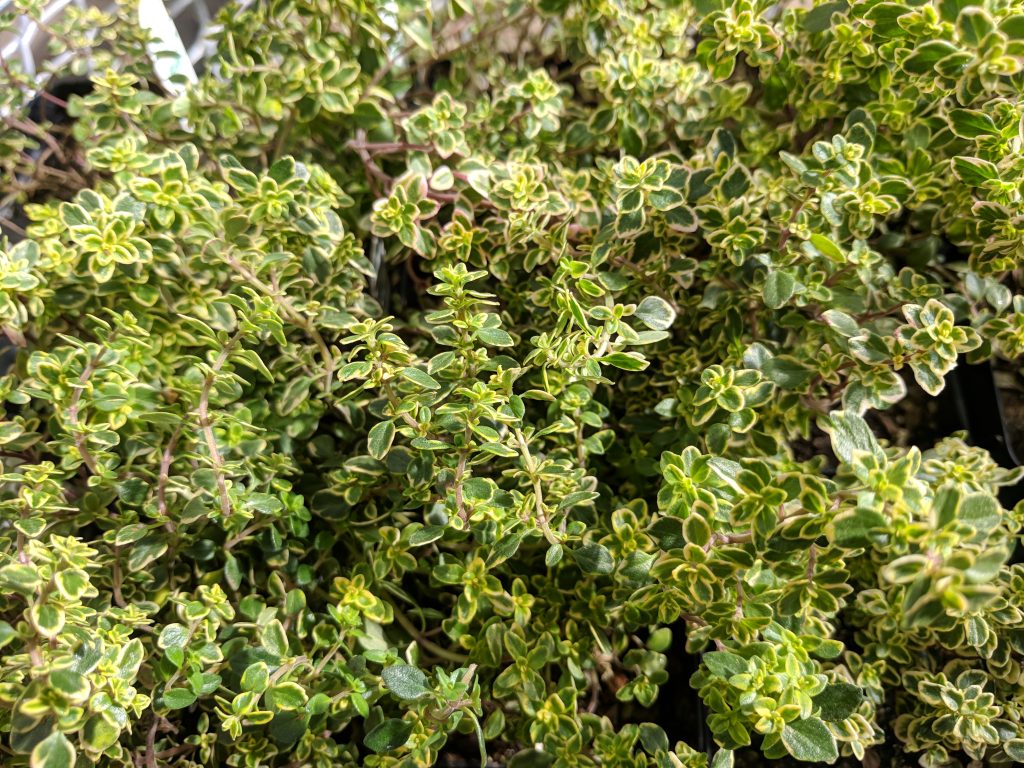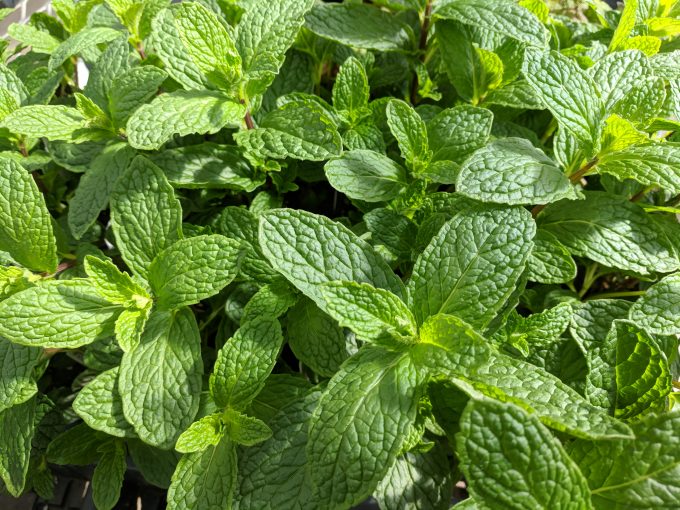Few plants in the garden appeal to more of our senses than herbs. Smell, taste… even touch… herbs have something for everyone. Whether you’re a veteran gardener or a newbie (but especially if you’re a newbie!), growing at least a few herbs should be on your “to do” list.
With a few tips and tricks, growing herbs can be fun and rewarding. Let’s look at some of the most popular herbs that are good choices for growing in Front Range gardens.
And the herb Tagawa guests love the most…?
Basil, of course! When the gardening season is in full swing a couple of months from now, Tagawa Gardens will be offering more than a dozen different varieties of basil. The traditional favorite is sweet or Genovese basil. Many cooks feel this makes the best pesto.
But other varieties are finding an enthusiastic following. Red rubin basil, cinnamon basil, Thai basil… they’re all a little different. Fortunately, the growing requirements are pretty much the same.
Basil is native to many of the Mediterranean countries, so it’s going to like a bright, sunny spot. Basil that doesn’t get enough light will stretch and get leggy and floppy. But since our Colorado sun is a lot harsher than what you might find in Italy, for example, your basil may appreciate a little protection from our intense mid-afternoon sun.
Basil likes soil that is moist, but never soggy, like the volcanic soils of the Mediterranean. If you’re growing your basil in beds, mix a scoop of compost into the planting hole along with a scoop of cactus mix for good drainage. If you’re growing in large pots, adding a bit of cactus mix will be helpful there, too.
As with all container-grown plants, make sure you’re using a pot with at least one good drainage hole.
And my personal favorite…?
Okay. If I was growing only one basil, I’d pick “African blue bush.” Take the ” bush” part to heart. I grow three African blues in a large (~20″) pot on my deck, next to the sliding glass door. Every time one of my dogs (four at the moment) walks by, it brushes up against the big, bushy plants and the wonderful aroma goes up and out. By mid-summer, that pot is overflowing, with plants at least two feet tall and wide.
I leave the pale blue flowers in place. The rule of thumb with herbs grown for their foliage is to remove the flowers so more of the plant’s energy goes into the essential oils in the leaves. But my honeybees love the blue flowers, and I love the bees, so the flowers stay.
The leaves of African blue aren’t quite as succulent as some of the other varieties. But if you pick the youngest, most tender leaves for cooking, they’ll be just fine.
Remember that all basils are extremely frost tender, so don’t plant them out too soon. And make sure you finish your harvest well before our first cold snap in the fall.
Two more favorites: lavender and rosemary
It’s impossible to choose between these two wonderful herbs, and fortunately, we don’t have to!
I’ll start with lavender, only because it can thrive as a perennial here. When I speak to garden clubs and other groups as part of my OutReach duties for Tagawa’s, I always tell them that there are two seriously under-used plants they definitely need to be growing here: garlic and lavender. (We’ll deal with garlic another time.)
Lavender loves Colorado, as long as we meet its basic needs. There are so many varieties that can do well here. (Learn all about them at Tagawa Gardens annual “Lavender Fields Forever” event July 14!)
Different varieties of lavender are best used for different purposes. Some are ideal for culinary use. Others are chosen for their long-lasting fragrance or for crafting. The staff in our perennials department will be happy to guide you to the variety that will work best for you.
With proper care, many of these lavenders will be just fine in beds. They need well-drained soil and plenty of sun all day long. Winter watering is important, too.
If you want to have the fragrance and beautiful flowers of lavender in containers, consider planting some of the non-hardy varieties of Spanish or French lavender. They won’t survive our winters, but they are deliciously aromatic and make a great addition to decks or patios. I think their flowers resemble little pink and purple bumblebees. What’s not to love!
And then there’s rosemary!
Like lavender, rosemary is actually a somewhat woody shrub. Unlike lavender, rosemary is not easy to over-winter here. Varieties like “Arp” and “Madeline Hill” may survive in a very protected area, away from drying winds and intense winter sun, but it can be hit and miss.
I’ve had excellent luck over-wintering a prostrate form of rosemary in a large (15″) terra cotta pot that I move indoors to a sunny but unheated enclosed porch during the winter. It’s now in its fifth or sixth winter and doing just fine.
Rosemary prefers a cold location rather than our dry, heated indoor air, which can dry out the needles and eventually kill the plant. I don’t worry about my rosemary unless temperatures on the porch drop into the low ‘teens.
Rosemary has beautiful pale blue flowers. Feel free to remove them, or leave them for the bees, as I do. They make lovely, and tasty, additions to salads or stir-fries.
Like lavender, rosemary does best in well-drained soil. Water the plants thoroughly, then let the roots dry out somewhat before you water again.
If it’s dainty you want, try some thyme
With its oh-so-tiny leaves, thyme may be the most delicate-looking herb around. But it’s tougher than you might think.
There’s an increasing assortment of creeping perennial thyme varieties that Tagawa’s offers under the name “Steppables.” These beautiful little plants are purr-fect for growing in rock gardens or between flagstone steps and will tolerate light foot traffic. But they are generally not intended to be edible.
For culinary thyme, check out varieties like variegated lemon thyme. Thyme needs plenty of good sunshine, but also will tolerate a bit of afternoon shade. It prefers light, well-drained soil, and definitely does not want “wet feet,” roots that stay moist for too long.
A wonderful herb… with some bad habits
If you are careful how you grow it, mint can be a terrific herb for home gardeners. The problem is that mint is a bully. It wants to take over the world. It’s your job not to let it!
The stems of mint will set roots and grow wherever they touch the ground. The safest way to keep mint in check is to grow it in a container… a large pot or barrel… and don’t let the draping stems come in contact with the soil outside the pot.
The varieties of mint seem endless. “Mojito” mint is currently quite popular, in keeping with the Cuban cocktail that gives it its name.
Chocolate mint is one of my personal favorites. One gentle touch releases a delicious combination of chocolaty goodness and crisp mint.
Like so many of these wonderful herbs, mint should be grown near sidewalks or decks and patios where it’s easy to give it a passing touch and make your world come alive with its perfume.
Tagawa carries a wide variety of herbs year ’round. But as the gardening season approaches, our herb department kicks into high gear! Whether you’re a newbie or a gardening veteran, let us help guide you to the herb harvest of your dreams!
